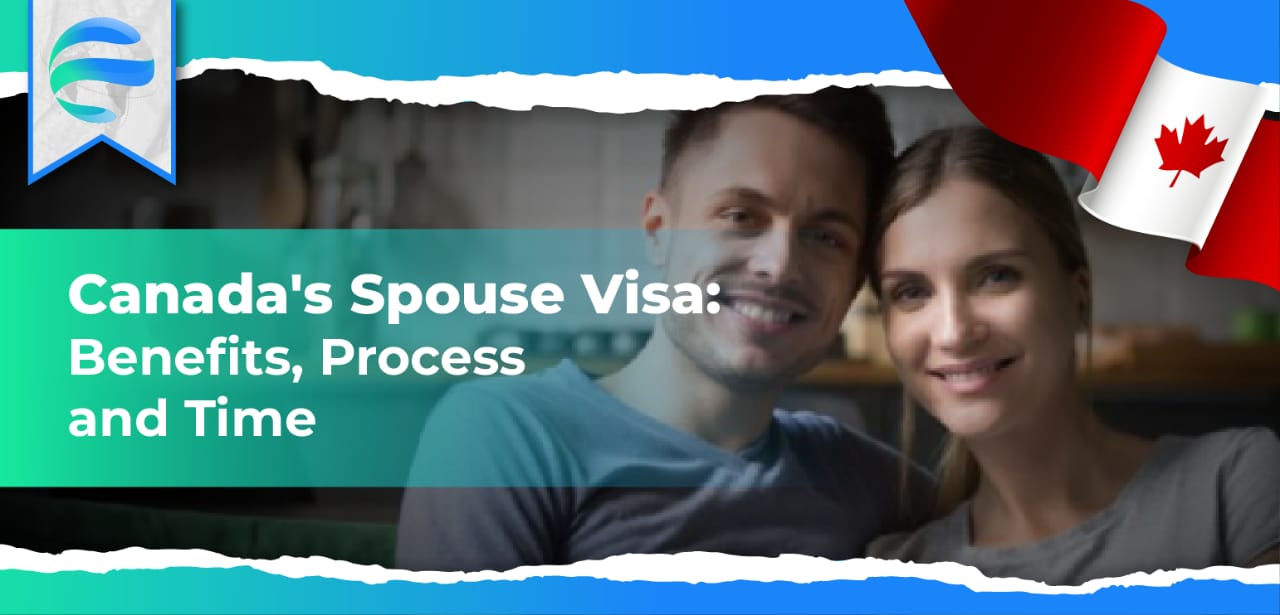
Migration has been a vital force in human civilization. It allows for the exchange of cultures, knowledge, and opportunities across borders. In the realm of migration, a notable category is family reunification, with a spouse visa being a significant aspect. This article provides an in-depth understanding of what a spouse visa is, its benefits, the application process, and the timeline associated, particularly focusing on Canada's Spousal Sponsorship program.
Introduction to Spouse Visa
A spouse visa, often referred to as a Spousal Sponsorship in Canada, is a legal provision that enables a Canadian citizen or a permanent resident to sponsor their foreign spouse or common-law partner for Canadian permanent residence. It is designed to bridge the geographical distance between couples, allowing them to live and work legally in Canada. The policy underlying the Spousal Sponsorship program is the Canadian government's commitment to family reunification.
The Wide-ranging Benefits of a Spouse Visa
The benefits of holding a spouse visa are manifold. These range from unrestricted living and working rights to access to social benefits and a straightforward pathway to citizenship.
Unrestricted Living and Working Rights
Firstly, the spouse visa grants the sponsored individual the freedom to live anywhere within Canada. There are no restrictions related to location, which allows the couple the flexibility to choose a home that best suits their lifestyle and job prospects.
Additionally, the visa holder gains the right to work in Canada without needing a separate work permit. This not only means financial independence for the spouse but also contributes to the family's economic stability.
Access to Social and Health Benefits
Another significant advantage is that the holder of a spouse visa enjoys the same benefits as any other Canadian permanent resident. They have access to Canada's world-class healthcare system, known as Medicare, which covers necessary hospital and doctors’ services.
The spouse visa also grants access to social benefits such as the Canada Child Benefit, a tax-free monthly payment made to eligible families to help with the cost of raising children. Other social support systems include Old Age Security, Guaranteed Income Supplement, and Canada Pension Plan.
Pathway to Citizenship
Perhaps the most enticing benefit of a spouse visa is the clear path it provides to Canadian citizenship. After being granted permanent resident status, the visa holder can apply for Canadian citizenship after living in Canada for three years out of the last five. This opportunity to become a citizen of one of the world's most immigrant-friendly countries is a significant draw.
The Process of Obtaining a Spouse Visa
Securing a spouse visa involves a multi-step process, which includes determining eligibility, gathering the necessary documents, completing the application, paying the fees, and waiting for the decision.
Step 1: Determining Eligibility
The eligibility criteria for a spouse visa are clear-cut. The sponsor must be a Canadian citizen or a permanent resident, at least 18 years old, and financially capable of supporting the sponsored individual. This financial support means the sponsor is willing and able to meet basic needs—food, clothing, shelter, and other necessities—for their spouse.
Step 2: Gathering Necessary Documents
Documentation is a critical component of the spouse visa application process. Necessary paperwork includes proof of the sponsor's Canadian citizenship or permanent resident status, a valid marriage certificate (for spouse sponsorship), evidence of a genuine relationship (like photographs, communications, etc.), and financial records among other documents.
Step 3: Completing the Application
The application for a spouse visa includes several forms that must be filled out accurately and completely. These forms provide information about the sponsor and the sponsored individual and their relationship. It's crucial to take time with these forms as inaccuracies or omissions can result in delays or even refusal of the application.
Step 4: Paying the Application Fees
Application fees are an integral part of the spouse visa process. These include fees for processing the application, the Right of Permanent Residence Fee (RPRF), and biometrics fee, all of which must be paid when applying.
Step 5: Waiting for the Decision
After submitting the application, it will be reviewed by Immigration, Refugees and Citizenship Canada (IRCC). This review process includes a thorough examination of the documentation provided, verification of information, and potentially an interview. If the application is approved, the sponsored individual will receive a Confirmation of Permanent Residence (COPR).
The Timeframe for Spouse Visa Approval
The processing time for a spouse visa can vary. On average, it takes about 12 months, but this timeframe can be longer or shorter depending on a variety of factors. These can include the completeness and accuracy of the application, the workload at the processing center, and whether additional documents or information are required.
The application process may seem lengthy, but it's essential to remember that it's a necessary step to ensure the integrity of the immigration system. Patience is key during this period.
Conclusion
In essence, a spouse visa is a powerful tool that aids in reuniting families and strengthening cultural diversity within Canada. The benefits it offers, from unrestricted living and working rights to the opportunity for citizenship, can drastically enhance the quality of life for the visa holder. With careful navigation of the application process, the wait can lead to a rewarding outcome.















